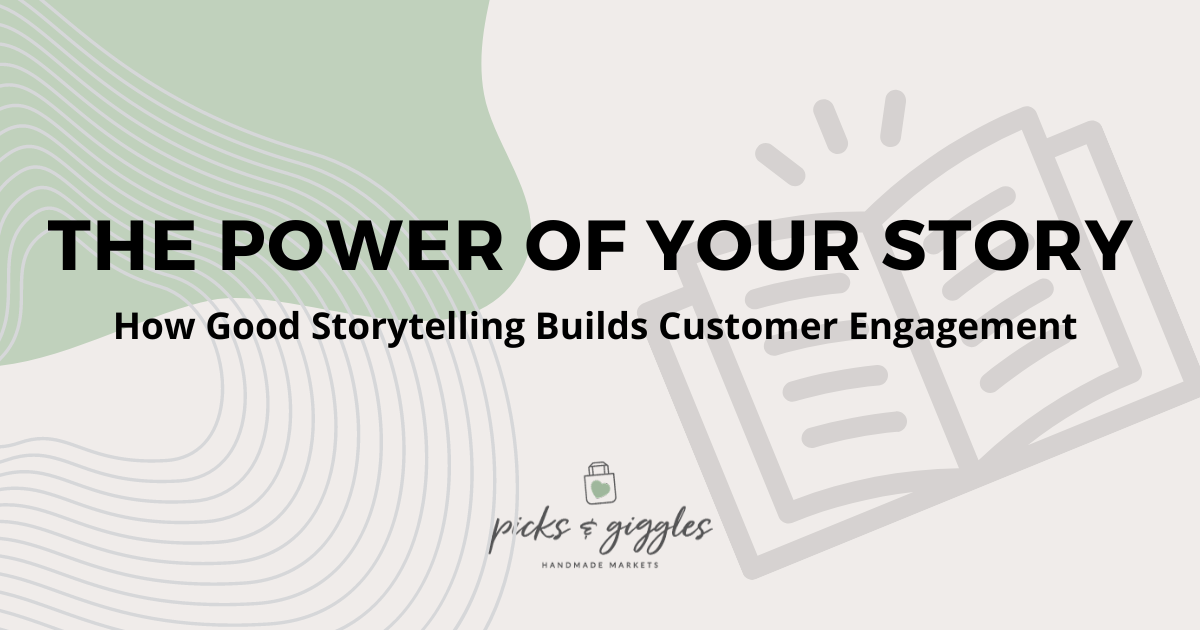
The Power Of Your Story :
How Good Storytelling Builds Customer Engagement
We’re all suckers for a good story, right?
Stories are powerful. They leverage our shared experiences and perceptions of reality to help us connect with each other, and with the things we hold most valuable.
Successful business owners know this, and learn how to harness it to create memorable experiences that keep customers coming back.
Storytelling marketing communicates your brand message through narrative, inspiring an emotional response in the audience that can be far more powerful than simply reciting facts or statistics. Ultimately, the goal when you are telling your brand story is to make the customer understand why they should care.
So what exactly makes storytelling such a powerful brand tool, and how can business owners do this well? Let’s take a closer look.
What Is Brand Storytelling?
Brand storytelling is a marketing strategy that continues to gain popularity for one very specific reason: humans connect with each other through stories.
Stories draw out the things we have in common with one another. They depict realities that we all experience.
When your marketing strategy is built around a story, the customer is positioned as the “main character”. Your audience becomes the centrepiece around which everything else must orbit.
Brand storytelling is more than just informing people how your business got started. It’s about your values, your mission, and how your product or service is going to benefit your customer’s life. In other words, your messaging should be less about you and more about what you do for them.
Make It Personal – And Make it Count
By necessity, 2+ years of on-and-off pandemic restrictions completely changed the way people shop and do business. Even as life returns to normal, consumer expectations have changed during this time. It’s been estimated that up to 75 percent of consumers tried a new shopping behaviour during the pandemic, and that 80 percent of those intend to stick with those new habits (source).
Personalizing your customer’s experience is more important than ever, and customer-facing communications are a huge part of this. It goes beyond simply “getting personal” on social media. Personalization should be a hallmark of every customer touchpoint, from checking in with them after a purchase, sending them helpful content, or asking consumers to write a review based on their experience.
These personal touches, in a way, tell your story for you because they communicate to customers where you place value: on them!
What’s Your “Why”?
Did you know that the top 10 companies in the Global Empathy Index are also among the world’s fastest-growing and profitable companies?
Your customers want more than just a product or service; they want the value-add that comes with your commitment to causes that are beyond just your own profit.
As a business owner, you need to find your “why” – and to communicate it clearly and often.
Picks and Giggles is committed to supporting the makers, creative thinkers and entrepreneurs who think outside of the box and shape the culture around them as a result.
This kind of energy is what changes communities. This is our “why”, and we talk about it often! Brand messaging is about consistently reinforcing the values and experiences that form the fabric of who you are as a business.
Sure, the markets are fun, and we love to celebrate creativity. But if we ever lost sight of the broader ripple effect of what we do, our brand would lose steam overnight.
– – – – – – – – –
The shop local movement isn’t going anywhere. Despite the impact of the pandemic on local economies, a June 2022 Maru poll revealed that 66 percent of Canadians are still choosing to buy from smaller, local businesses over larger retailers. 86 percent of respondents said that supporting local businesses is important to them.
If you’re a local business owner, you don’t have to convince your customers that you’re important. If we’re willing to take the Maru poll at its word, most people already believe this on principle alone, if not always in practice.
But you do need to figure out how to tell your story –
– and to do it in such a way that makes your customer want to be part of it.